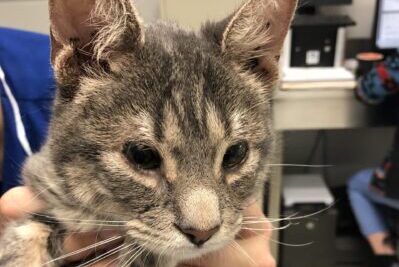Cats Are Medically Underserved

Cats Are Medically Underserved
In my last post I wrote about how little attention has recently been paid to the cat in the articles published in The New York Times. Although I believe in fair and balanced reporting, the lack of newsprint devoted to the cat only hurts their feelings, not their health. As a cat owner, you might not be able to influence the editorial staff at The New York Times, but you can protect your cat’s health.
Over the past decade, veterinarians have noticed an alarming trend. Cats see a veterinarian half as often as dogs do. Just like dogs, cats can get sick and do need annual examinations by their veterinarians. Without regular medical care, your cat misses the opportunity to undergo screening tests to find disease before it becomes untreatable. Cats also need preventive healthcare, such as vaccinations and parasite prevention. I find three particular trends in feline health care particularly disturbing.
1. Rabies in cats is increasing.
In a recently published survey in the Journal of the American Veterinary Medical Association of rabies cases in the United States, the occurrence of rabies declined in all wildlife and domestic dogs, but in cats, rabies increased. Rabies presents a double whammy: it is fatal in cats and poses a huge health risk for the cat’s family members. The good news is rabies is safely and easily prevented by a vaccination which can be given when your cat visits her veterinarian.
2. Feline diabetes is on the rise.
The Banfield State of Pet Health 2010 report documented a 16% increase of diabetes in cats and a much higher occurrence of diabetes in cats than in dogs. The epidemic of diabetes in cats is likely linked to the increase in pet obesity. Annual wellness examinations will include measuring your cat’s body weight, and if your pussy cat is getting a little porky a weight reduction diet can be developed to help keep her from developing diabetes.
3. Dental disease has increased 10% in cats over the past 5 years.
A study from France reports in the Journal of Veterinary Dentistry that cats have a high rate of fractured teeth with retained roots, periodontal disease and bone loss around teeth. Every cat studied had periodontal inflammation. Cat owners can help prevent dental and periodontal disease in their cats with regular tooth brushing. Annual wellness examinations by your cat’s veterinarian can identify dental problems early, and teeth cleaning using special equipment is done with your cat under general anesthesia.
Don’t delay, call your veterinarian today. Your cat will thank you.
Photo: Dr. Philip Fox
________________________________________________________
This may also be found in the “Tales from the Pet Clinic” blog on WebMD.com.
For over a century, The Animal Medical Center has been a national leader in animal health care, known for its expertise, innovation and success in providing routine, specialty and emergency medical care for companion animals. Thanks in part to the enduring generosity of donors, The AMC is also known for its outstanding teaching, research and compassionate community funds. Please help us to continue these efforts. Send your contribution to: The Animal Medical Center, 510 East 62nd Street, New York, NY 10065. For more information, visit www.amcny.org. To make an appointment, please call 212.838.7053.


































